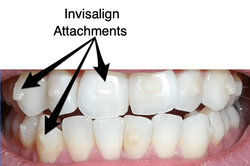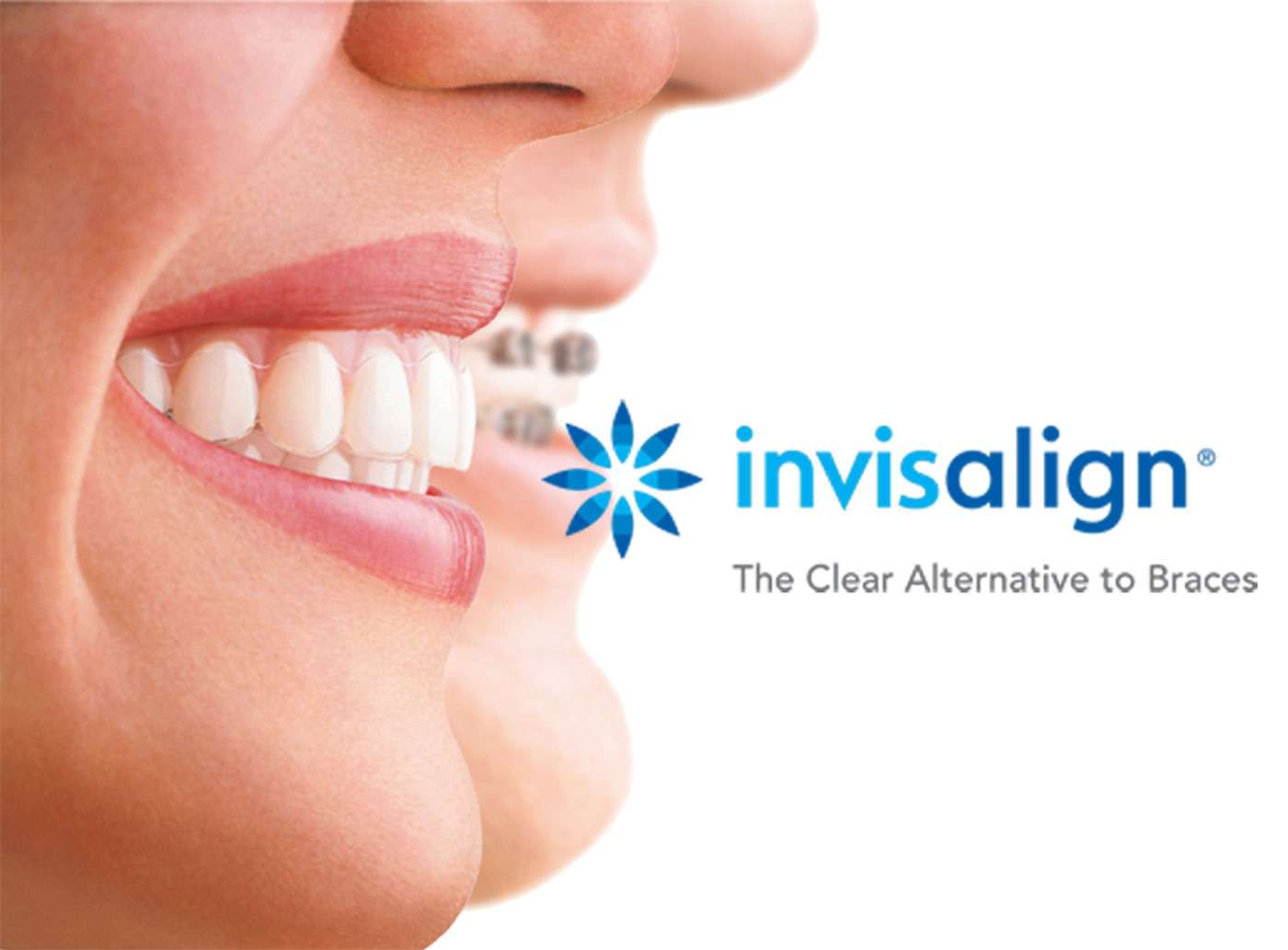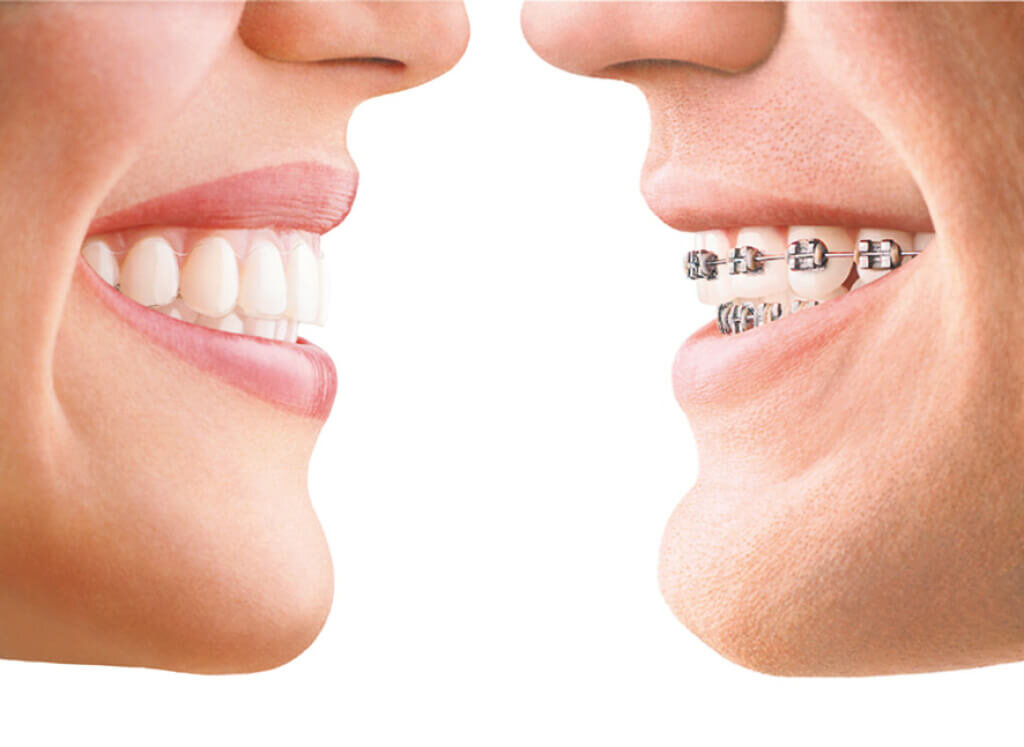Discover the Perks of Invisalign for a Perfect Smile Improvement
Discover the Perks of Invisalign for a Perfect Smile Improvement
Blog Article
Invisalign vs. Typical Braces: Which Choice Is Right for You?
When considering orthodontic therapy, the selection in between Invisalign and conventional dental braces presents a number of important aspects that warrant careful analysis. Invisalign offers a discreet option with detachable aligners, while traditional braces supply a more visible yet effective service for serious misalignment. Each choice includes unique benefits and disadvantages connected to aesthetics, comfort, treatment period, and price. Understanding these nuances is essential for making an informed decision that aligns with your personal choices and way of living. The inquiry continues to be: which alternative will ideal fulfill your orthodontic demands and assumptions?
Introduction of Therapy Options

In comparison, conventional dental braces contain steel brackets and wires that are bound to the teeth. This method uses constant pressure with time to accomplish positioning. While effective for complex orthodontic concerns, standard dental braces require routine sees for changes and can posture difficulties in keeping oral health as a result of the difficulty of cleaning about braces and wires.
Both alternatives have their merits, and the option frequently rests on details dental problems, lifestyle preferences, and individual conformity. Eventually, consulting an orthodontic specialist is important for identifying the most ideal treatment plan tailored to private requirements. Understanding the nuances of each choice can significantly influence the overall success of orthodontic treatment.
Visual Factors To Consider
A considerable element influencing the choice in between Invisalign and typical braces is the aesthetic charm each therapy offers. Invisalign aligners are crafted from clear plastic, making them virtually unnoticeable when worn.
On the other hand, typical braces contain steel brackets and cords, which can be a lot more obvious. While improvements in orthodontic technology have brought about the advancement of smaller brackets and tinted elastics, traditional braces still preserve an even more obvious account. For some people, the visibility of braces may prevent them from seeking necessary treatment.
Ultimately, the option in between Invisalign and typical braces might depend upon individual preferences relating to aesthetic appeals. People that focus on discretion typically favor Invisalign, while those that are much less concerned concerning visibility might choose for typical braces. Recognizing the aesthetic ramifications of each alternative is important for making an informed choice that aligns with one's way of life and preferences.
Convenience and Convenience

In terms of convenience, Invisalign aligners are detachable, enabling patients to enjoy their favored foods without constraint and preserve ideal oral health. Cleaning and flossing are simplified, as the aligners can be taken out throughout these routines, whereas conventional braces call for mindful steering around cords and brackets.
In addition, Invisalign's modern system permits fewer orthodontic brows through. Patients generally receive multiple collections of aligners at as soon as, which can simplify the treatment procedure and minimize time spent in the orthodontist's chair. In contrast, typical braces necessitate normal modifications, making them less hassle-free for those with hectic timetables. Invisalign. Generally, the comfort and benefit of Invisalign make it an attractive their explanation choice for several individuals looking for orthodontic treatment.
Therapy Period and Efficiency
While both Invisalign and typical braces are reliable in correcting dental imbalances, the period of treatment can vary significantly between the 2 options. Commonly, Invisalign treatment can take anywhere from 12 to 18 months, depending upon the intricacy of the case. The clear aligners work by slowly moving teeth right into their desired settings, and routine follow-ups with an orthodontist aid ensure development continues to be on track.
In contrast, standard dental braces typically need a longer dedication, normally varying from 18 months to three years. This results from their set nature and using brackets and cords, which can be a lot more effective for serious imbalances and intricate instances (Invisalign). The therapy performance of traditional braces is well-documented, as they enable precise adjustments and greater control over tooth motion
Eventually, the option between Invisalign and conventional braces might depend upon both the awaited therapy duration and the particular dental issues handy. Consulting with an orthodontist is essential, as they can provide tailored referrals based upon private needs, guaranteeing the chosen approach straightens with wanted end results and durations.
Cost Comparison and Insurance Coverage Choices
Expense plays a significant role in the decision-making procedure for people taking into consideration orthodontic therapy, whether choosing Invisalign or standard braces. On average, the price of Invisalign varieties from $3,000 to $8,000, while standard braces generally set you back in between $2,000 and $6,000. Variables affecting go to my blog these expenses include the intricacy of the situation, the period of treatment, and geographical area.
Insurance insurance coverage can substantially impact out-of-pocket expenditures. Numerous oral insurance coverage strategies supply partial coverage for orthodontic therapies, but the specifics can differ widely. It is crucial for individuals to review their insurance coverage to establish the extent of insurance coverage for either option. Normally, traditional braces might be more often covered by insurance policy plans contrasted to Invisalign, which some insurance providers classify as an aesthetic procedure.
In addition, a number of orthodontic practices use flexible payment plans, making both treatment choices a lot more obtainable. Patients ought to ask regarding prospective funding choices and price cuts for ahead of time settlements. Assessing the overall expense, consisting of insurance policy advantages and layaway plan, is vital for making an educated decision that lines up with both visual preferences and spending plan considerations.

Verdict
In summary, the option between Invisalign and standard dental braces rests on numerous aspects, consisting of aesthetic choices, convenience, treatment duration, and cost. Invisalign provides a discreet, removable option that helps with oral hygiene and nutritional adaptability, while standard dental braces may be better for complex oral concerns and frequently come at a reduced rate factor. Eventually, examination with an orthodontist is necessary to evaluate private situations and determine the most appropriate therapy choice for achieving optimal oral positioning.
When considering orthodontic therapy, the option between Invisalign and conventional braces presents numerous vital variables that warrant careful examination.Contrasting Invisalign and you can find out more standard braces exposes unique treatment options for orthodontic adjustment.While both Invisalign and standard dental braces are effective in correcting oral imbalances, the period of therapy can vary significantly between the two options.Cost plays a substantial duty in the decision-making procedure for individuals considering orthodontic treatment, whether opting for Invisalign or traditional dental braces.In recap, the choice in between Invisalign and typical braces pivots on multiple elements, consisting of visual choices, comfort, treatment period, and price.
Report this page